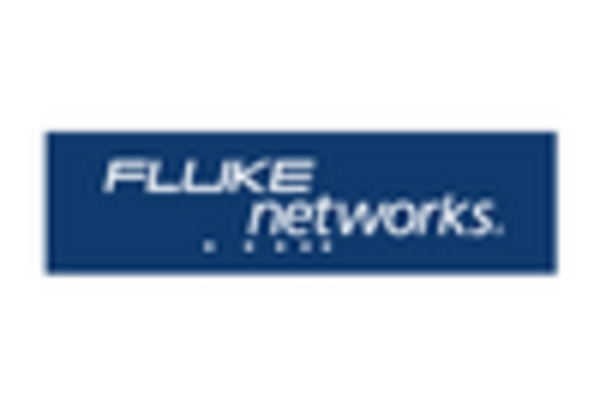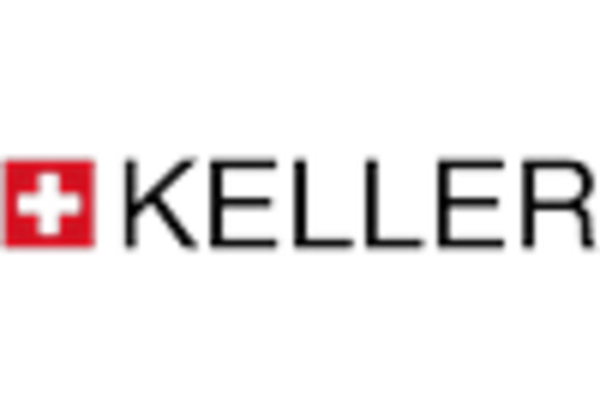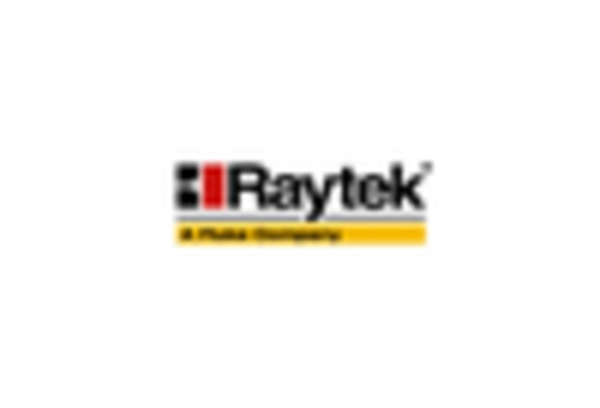Rising Industrial Applications
The Pyrometer Market is experiencing a surge in demand due to the increasing applications across various industrial sectors. Industries such as metal processing, glass manufacturing, and ceramics are increasingly relying on pyrometers for precise temperature measurements. This trend is driven by the need for enhanced quality control and process optimization. For instance, the metal industry utilizes pyrometers to monitor temperatures during melting and forging processes, ensuring product integrity. The growth of these sectors is projected to contribute significantly to the expansion of the pyrometer market, with estimates suggesting a compound annual growth rate of around 5% over the next few years. As industries continue to evolve, the reliance on accurate temperature measurement tools like pyrometers is likely to intensify.
Growing Focus on Quality Control
The emphasis on quality control in manufacturing processes is significantly influencing the Pyrometer Market. As industries strive to meet stringent quality standards, the need for accurate temperature measurement becomes paramount. Pyrometers are essential tools for ensuring that materials are processed at optimal temperatures, thereby reducing defects and enhancing product quality. This trend is particularly evident in sectors such as food processing and pharmaceuticals, where temperature control is critical for compliance with safety regulations. The market is projected to witness a steady increase in demand for pyrometers as companies invest in quality assurance measures. Analysts suggest that this focus on quality control could lead to a market growth rate of approximately 4% annually, reflecting the increasing importance of precision in manufacturing.
Advancements in Sensor Technology
Technological innovations in sensor technology are playing a pivotal role in shaping the Pyrometer Market. The development of non-contact infrared sensors and fiber optic pyrometers has enhanced measurement accuracy and response times. These advancements allow for real-time monitoring of high-temperature processes, which is crucial in industries such as aerospace and automotive. The integration of smart technologies, including IoT capabilities, is also becoming prevalent, enabling remote monitoring and data analysis. This shift towards more sophisticated sensor technologies is expected to drive market growth, as manufacturers seek to improve operational efficiency and reduce downtime. The market for advanced pyrometers is anticipated to grow at a notable pace, reflecting the increasing demand for precision in temperature measurement.
Expansion of Renewable Energy Sector
The Pyrometer Market is also benefiting from the expansion of the renewable energy sector. As the world shifts towards sustainable energy sources, the demand for pyrometers in solar thermal applications is on the rise. Pyrometers are utilized to monitor the temperature of solar collectors and ensure optimal performance. Additionally, the growth of biomass and geothermal energy projects is further driving the need for accurate temperature measurement tools. This trend is expected to create new opportunities for pyrometer manufacturers, as the renewable energy sector continues to evolve. Market forecasts indicate that the integration of pyrometers in renewable energy applications could contribute to a growth rate of around 6% in the coming years, highlighting the potential for innovation in this area.
Increased Investment in Research and Development
Investment in research and development is a key driver for the Pyrometer Market. Companies are increasingly allocating resources to innovate and enhance their product offerings, focusing on developing more efficient and reliable pyrometers. This trend is particularly evident in the context of emerging technologies such as machine learning and artificial intelligence, which are being integrated into temperature measurement systems. The push for innovation is likely to result in the introduction of next-generation pyrometers that offer improved accuracy and functionality. As manufacturers strive to differentiate themselves in a competitive market, the emphasis on R&D is expected to foster growth. Projections suggest that this focus on innovation could lead to a market expansion of approximately 5% over the next few years, underscoring the importance of continuous improvement in the pyrometer sector.

















Leave a Comment